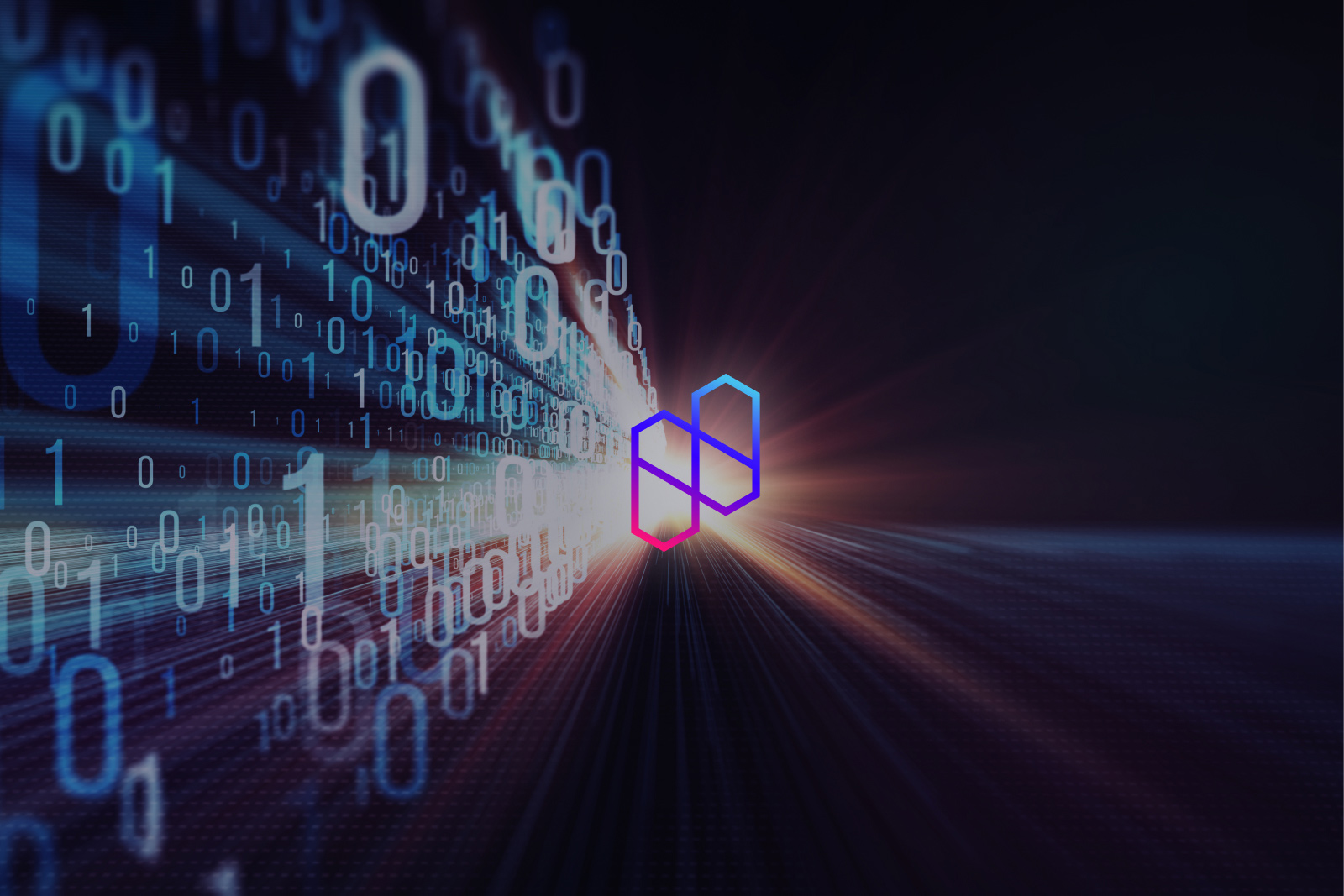· BYOC · 16 min read
How to build a BYOC offering
After countless conversations with companies who have built or evaluated BYOC (bring your own cloud) offerings, as well as helping customers create new offerings — we have learned A LOT about what it takes to create a BYOC offering.

Nuon is an infrastructure platform that enables any company to create a BYOC offering. Configure your app and start running your product in hundreds or thousands of customer cloud accounts — today.
This post will talk through the different types of BYOC deployments we are seeing in the wild and walk through the three main problems that teams need to automate/invest in to execute a BYOC offering — installation into customer environments, day two operations, and finally handling the evolution of their product.
So, you want to build a BYOC offering?
Bring your cloud (BYOC) has become the standard way to deliver products to enterprise customers. Furthermore, for infrastructure, data, AI, and many OSS products, BYOC is emerging as a popular deployment choice for customers of all sizes outside the enterprise.
BYOC is a compelling deployment offering because it broadly sidesteps the costs and challenges of building, scaling, and operating a multi-tenant SaaS platform while opening up new integrations directly in a customer’s cloud account.
However, only a handful of companies have yet to build these types of offerings, and there is little to no online information about how to approach making a BYOC deployment option.
Further adding to the confusion, there are multiple approaches to both BYOC architecture and deployment strategies:
- shared responsibility vs. turnkey architectures
- manual one-time deployments
- automated and self-serve deployments
Needless to say, when it comes to building your first BYOC offering, there are many things to consider. Our intent with this post is to share first-hand learnings and dispel ambiguity around what it takes to deliver software directly into customer cloud accounts.
Common BYOC Deployment and Architecture Patterns
While some customers asking for a BYOC deployment want to be as hands-free as possible, others will have bespoke enterprise deployment requirements. These deployments are often enforced by existing SRE/DevOps or IT/procurement teams, depending on the product’s end user.
Depending on the product, running directly inside a customer’s existing infrastructure can be beneficial for integration, uptime, and access purposes. For instance, an observability tool, being able to quickly run agents in existing compute clusters or a database tool being able to access internal networks are hard requirements.
Finally, depending upon the type of customers you are selling to, such as HealthCare, Fintech, EU-based customers, or any business presiding in locations with data sovereignty requirements — you will need to support, at a minimum, different cloud regions and sometimes even new cloud providers (for example, Azure support is a widespread requirement for US software businesses selling AI solutions into the EU).
All things considered, when setting out to build a BYOC offering, you should plan for at least a few of the following:
- ability to install and run your product in a completely new environment
- ability to install and run your product using existing infrastructure (such as a customer-provided VPC network or Kubernetes cluster)
- broad coverage between cloud regions and common cloud providers
When you factor this in — building a BYOC application starts to look like a “run anywhere” problem, adding complexity with each permutation you need to support. This leads teams to one of two tricky situations:
- Limit the customers they can sell to and leave new revenue/opportunities.
- Invest in the proper tooling to deliver your app reliably into these different environments while allowing your team to continue shipping and evolving your product.
We’ve seen far too many companies leaving deals on the table or saying, “We’ll come back to this later,” — so let’s play the hypothetical and talk through just what you have to solve to build a BYOC product that can be delivered into customer environments, without sending your team into a maintenance mode purgatory!
We will break this down into three components:
- installation
- day 2 operations
- productizing
Installation
Installing your application in your customer’s cloud account is not as simple as just asking for credentials and using existing infrastructure as code (IAC) tooling to set up their account. IAC tooling is usually designed for a multi-tenant product and is rarely tested for zero-to-one deployment in foreign accounts — it might require manual configuration, account configuration, or region-specific dependencies. Often, organizations are configured to add security, policy and access baselines to each sub-account in a multi-tenant organization that will not work in a customer environment.
Second, running your product in your customer’s cloud account often requires a significant amount of customer-provided configuration. Setting up DNS records, authentication, or even adding secrets to access customer resources adds additional installation steps.
Since each point of friction can either scare away smaller teams who do not have the resources to manage lengthy or error-prone installation processes and larger enterprise teams can get stuck in procurement for months on end with each additional step, (such as needing a DNS record), it is critical to invest in automating installations.
Your customers should be able to grant you access and select from some configuration options. When they need to make changes to their installation later on, they should have the knobs to auto-scale their instances, roll back updates, and more.
Customer configuration
The first challenge that companies building for BYOC need to solve is creating a flexible installation strategy — this requires taking your existing infrastructure, application, and automation code and re-configuring it to work in multiple deployment environments, as well as to be portable and work from first install. Not only are multiple deployment options required, but additional customer configuration inputs and controls are required, adding additional complexity.
IAC is for two types of infrastructure — the “base layer” and “application layer.” Base layer IAC is used to provision networks and compute clusters, permissions, and tertiary resources such as log tooling, IAM, and security groups. The second group is the “application layer” IAC, which is generally managed by application developers and used to provision specific resources for services such as databases, cloud storage buckets, etc.
The base layer infrastructure for BYOC deployments requires reconfigurability for customers that have the following requirements:
- want a turnkey solution (deploy everything into a new account)
- want to pick between platforms (ECS vs EKS) or clouds (AWS vs Azure)
- want a turnkey solution but want to customize things like network, compute type, or version
- want to use an existing network or compute clusters
Supporting these permutations requires you to configure your base layer infrastructure to plug and plug different resources, and supporting multiple platforms often requires building IAC that deploys your app in various ways. Customer-provided infrastructure introduces its own challenges since customer configurations must be compatible with your product.
Since most application layer infrastructure depends on base layer infrastructure, this often requires sharing managed resources such as the network with higher level IAC. For instance, to deploy a database, the IAC must know what network to deploy it into. This also means an implicit ordering is required between these components in the provisioning lifecycle.
Supporting these different permutations quickly adds complexity to your IAC footprint, requiring you to reason about an entirely new matrix of configuration options — maintaining, evolving, and testing this becomes a significant investment. Often, this can be at odds with multi-tenant tooling and requires maintaining two bespoke paths to support BYOC customers.
Long tail automation and installers
Once your team has created IAC that is customer-cloud compatible, the next step is automating the various steps of the installation into a single workflow — often called an installer. This allows customers to quickly install your product, even if they are not technical or part of an IT/SRE team.
Often, the first few BYOC installations are a long, drawn-out manual process that goes something like this:
- First, you get on a call with your customer and share access to your configuration repositories.
- The customer starts running IAC and deployment scripts.
- Often, roadblocks are hit — whether another team needs to procure something or the system is incompatible with the account.
This process is not only manual and error-prone but requires a technical user. Since it is not fully automated, the installs can not be programmatically tested, leading to more customer issues.
An automated installer will enable automated testing, a self-serve offering, and faster install times for customers or POCs. Creating a fully automated install experience requires the team to orchestrate their IAC and deployment tooling and create turnkey installer options that package the infrastructure and application code in one.
Artifact management
Beyond infrastructure management, artifact management requires automation. While an installer provisions the installation, most teams will want more control over deployable artifacts — specifically container artifacts. These artifacts change much more frequently than IAC and often need to be updated several times a day.
Most teams use CI to build images, and as their product grows in complexity, they prefer to develop images once and publish them to a private registry that different systems can access. In a multi-tenant environment, granting access to a handful of accounts requiring access to a container image registry is trivial.
However, once your application is being run in foreign customer accounts, you have to solve for the following:
- custom permissions for external accounts
- cleaning up old images and updating to newer versions
- enabling image scanning for enterprise customers
- syncing images into customer accounts to prevent being a SPOF (single point of failure) and avoiding egress costs
While granting third-party access for customer installs to pull and run images directly is a starting point, it is broadly a non-starter once you pass a handful of installs or start deploying into more sensitive customers. It also requires you to be very thoughtful about tagging images because simply tagging an image “latest” can cause inadvertent updates and outages.
Furthermore, with direct customer access to installs, any outage in your image registry can become an outage for all your customers.
Syncing container images into customer accounts before they are used is the most secure and safest way to manage container images. By first copying image artifacts to a customer registry, the customer can enable container image scanning and ensure their installation only relies on local images. Nodes restarting and re-fetching images no longer depend on a third-party vendor-managed registry. Images can also be cleaned up safely whenever a new update is released in the customer account, ensuring no old container images are leaked.
Day-two Management
Once your product is running in a handful of customer accounts, day-two management becomes required. Without investing in the basic tools to ensure your product is working correctly for each customer, your product will have outages and a poor customer experience, or your team will be stuck paying a “developer tax” as they manually monitor and manage each install.
BYOC presents a new challenge for day-two operators that can quickly slow your team to a halt — since you don’t own the account, making operational changes can require getting on a call with your customer to update systems or debug outages.
For hosted SaaS products, you can directly access your account and make the necessary changes. With BYOC products, every change requires the ability to be rolled out, has to respect deployment or update windows, and needs basic observability tooling from day 1.
Application change management
To continually update your application in customer environments, teams invest in application rollouts that allow them to update each customer. While updating a hosted SaaS or self-hosted application is as easy as publishing a new container artifact or deploying to one or more environments — updating a BYOC application comes with additional concerns about how customers get updated.
Since each BYOC install is an entirely different environment, deployments must be designed to roll out to each customer individually. This is challenging because application errors might not be immediately apparent, unlike a hosted application with many tenants in the same environment — inherently, each install will have different usage, making pattern matching harder. Properly rolling out changes requires a combination of testing internally and then rolling out and “baking” (letting an update run for some time before continuing the rollout) before updating more customers.
Furthermore, while some customers will want the latest changes at all times, other customers might want to enforce release windows or manually opt into new changes/versions of the software. Many enterprise customers will require contractual agreements controlling how and when the application is updated.
Finally, since deploying application changes usually requires updating running containers, this can also require syncing new container versions, re-scanning container images, and removing unused artifacts.
Migrations
Two common types of migrations are database migrations and infrastructure migrations. Teams building for BYOC need to account for both, as their products will inevitably change after being installed in customer accounts. New services or dependencies will be added, schemas will change, and data will inevitably need to be modified.
Migrations tend to be the riskiest changes to roll out because they often involve updating actual infrastructure (such as clusters, networks, etc) or modifying data and can lead to outages, data breaches, or leaks. Unsurprisingly, BYOC customers are hyper-sensitive to these updates and generally want visibility into what is changing.
Teams building for BYOC often end up building automated tooling that allows them to:
- Automate infrastructure migrations and schedule them for rollout based on customer requirements and release windows.
- Create bespoke migrations to migrate specific vendor data when needed.
Finally, for customers that demand specific update windows, migrations can add additional complexity. Given the risk of infrastructure or data migrations, these customers may ask to audit changes ahead of rollout or limit them to a lower cadence than application updates.
Observability
To ensure quality of service for BYOC customers, observability must be implemented to work across many environments and enable “drilling down” into a single install. Whereas most regressions or problems in a hosted environment can be identified quickly by looking at aggregate metrics and alerts — BYOC adds a combination of release windows, different versions, and different environments.
Further complicating things — while most customers will allow primary telemetry data to leave their installs (think OTEL metrics or product analytics), logs are considered highly sensitive, and most customers will ask that vendors only access them on demand (with proper auditing in place). Sometimes, viewing application logs requires reaching out to customers and asking them to capture and share logs while debugging.
Setting up observability tooling for BYOC offerings requires:
- building an automated way to capture logs with customer approval or allow a customer to export and share logs
- sending product metrics and analytics back to the vendor’s observability tooling
- reworking monitoring/alerting to monitor both aggregate (across install) events, as well as per install events
Finally, it goes without saying that due to the sensitive nature of BYOC customers, teams must proactively ensure that no sensitive data is leaked via their observability stack.
When things go wrong
As with all software — things are going to go wrong. From introducing bugs in new releases, to failed migrations, to security patches that need to be applied quickly, teams building for BYOC are at both an advantage and a disadvantage operationally.
On one hand, in a hosted environment where the team owns the underlying cloud account — they always have access to investigate and remediate when things go wrong. However, in a hosted SaaS, the blast radius is implied to be much larger and can affect more customers. BYOC has the inverse problem; teams must plan for mitigations without direct access since each install is independent, so the blast radius should be smaller.
When building for BYOC, teams must invest in a rollback and escalation strategy early on and set themselves up with the right tools to run operational commands when necessary. Release windows and procedural rollouts help but are not the only solutions required.
Productizing BYOC
Teams investing in BYOC often need to consider how to productize their offering. Since installing for even a single customer is a large investment, these teams often plan to upsell as many existing customers as possible — while offering to new customers. This requires considering how onboarding, installation, and management should work and to what degree BYOC should be self-serve.
While productizing is a topic meriting a future post, we will touch briefly here.
Self-serve
An automated installer experience can enable self-serve once the application can be fully provisioned with minimal customer manual intervention. Companies often start by building a self-serve option into their dashboard or leveraging IAC to provision their app (such as creating a custom Terraform provider). Creating these options allows more customers to install and integrate the product.
To offer a self-serve offering, customers often provide cross-account access (usually using IAM), granting access for the initial install. Then, an onboarding experience that leverages the installer will walk the customer through setup.
Often, this flow will require the following steps:
- configure any certificates or secrets
- setup DNS
- connect the product with an existing VPN for access control
Self-serve requires a high level of automation, but once in place, it allows teams to offer their BYOC version to all customers.
Management tooling for customers
As part of self-serve BYOC offerings, management tooling is required to allow customers to manage and maintain their installation without manual intervention.
Teams often build in automation and configuration knobs to allow customers to manage their installs; these include:
- ability to autoscale/manage instance types as the product usage grows
- the ability to manage changes — either audit automatic updates or approve manual updates
- monitoring to ensure the application is healthy
A fully manageable experience for BYOC allows a company to scale its offering and build a better product experience that meets the needs of its earlier and enterprise customers. All while running the app in the customer’s account without significant investment by the customer to manage it.
Is it worth it?
Once a BYOC offering is in place, it offers a superior cost basis (for both vendors and customers), is more secure, and is conducive to meeting the requirements of data sovereignty and compliance in different jurisdictions.
For teams that invest early, BYOC can offer a field shift in who they can service and, over time, can be much simpler to provide than a multi-tenant offering. While emerging, some software companies have already used this offering to build giant businesses and help them scale faster. Even further, the companies that make this first-class have used it as a competitive advantage and cost saver, and BYOC has allowed them to focus on their product, not just scaling a hosted offering.
However, as this post outlines — getting over the initial hurdle of building for BYOC represents a massive investment. It requires significant expertise in long-tail automation of cloud services and enterprise requirements. Historically, teams would have to solve these problems by investing in everything from building installers to long-tail automation to figuring out how to handle things when they go wrong.
At Nuon, we believe that infrastructure to build a BYOC offering should exist, and our mission is to enable this for every company. Our platform enables any team to lift and shift their existing infra and application code and create a BYOC offering — in a single afternoon. Our vision is to make building applications that run in your customer’s cloud account as easy as your own!



